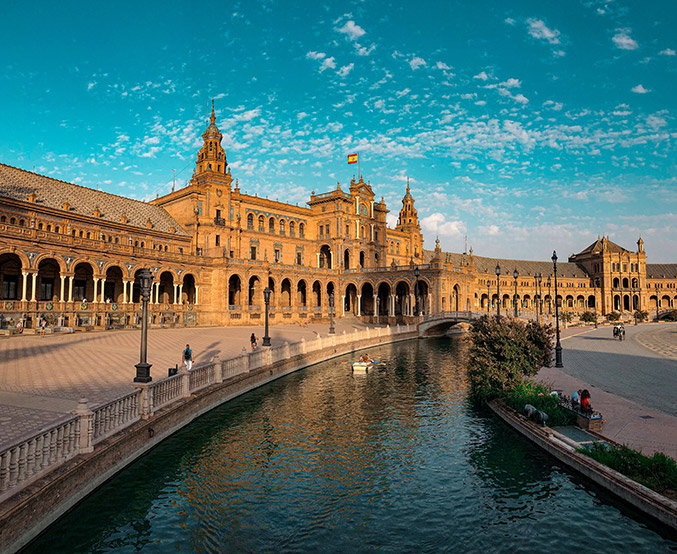Spain
Spain is one of my favorite countries in the world. With so much fascinating history, amazing architecture, festivals, world-class beaches, and renowned nightlife. Spain will give you an experience like nothing you can ever imagine.
With their love to connect with others and socialize, you will find tapas bars on every corner, serving some of the best-tasting wine any day of the week. Spaniards are fond of the nightlife and find every reason possible to come together to celebrate and enjoy life.
Depending on your vacation desires, you will find that Spain has much to offer from hiking the Pyrenees, visiting the Great Cathedral and Mosque of Cordoba, running with bulls in Pamplona, or soaking up the sun on a beach in Costa Del Sol.
Spain is an inexpensive place to visit, and so if you are tight on cash, this would be an excellent choice for you!
Things to See and Do in Spain
Typical Costs When Travelling
Accommodation – A hostel is the cheapest type of accommodations, spending around $15-$20 per night. Private room hostels will cost an additional $10. All hostels typically come with free WiFi and some with free breakfast. The mid-range hotel will cost around $50-$75 per night. My recommendation is to stay with an Airbnb, ranging from $35-$100 per night. The Airbnb locations were great and within walking distance to sightseeing locations.
(I recommend using www.Airbnb.com when looking for moderate price accommodations within a nice neighborhood)
Food – Spaniards enjoy small meals throughout the day, so you will find many options in tapas that range from $5-$15. If you want a sit-down restaurant meal with wine, you may expect to pay around $15-$18. Spain has so many good restaurants that you most likely will find something wonderful to eat, depending on your appetite. Visit one of the many “corner stores” to buy snacks, fruits, bread, and lunch meat to eat on the road while visiting the sights.
(Use www.TripAdvisor.com when trying to locate a restaurant within your budget range)
Transportation – All major cities have extensive metro systems. If you stay in one of the larger cities such as Madrid, you will want to purchase a combo pass, saving you money overall. An average ten trip pass will cost you between $12-$15. RENFE is the rail line in Spain, offering both high-speed trains and regular trains. High-speed trains are more expensive but will save you a lot of time. You may also utilize a Eurail Pass if you are traveling throughout Europe. Traveling by the Alsa bus is the cheapest option. A trip from Madrid to Barcelona starts at around $35. Each city has a bus system. Ask your hotel concierge for assistance. BlaBlaCar is a ride-sharing option if you have a flexible schedule.
Suggested daily budget – Average daily budget should be approximately $131 per person, including hotel, transportation, meals, and sightseeing. A two-week vacation for two people costs roughly $3,600, staying at mid-range hotels.
Money Saving Tips
What can I expect from Spain?
Spain is a smorgasbord of bustling cities, scenic countryside, and sunny islands. Beyond the typical vacation destination in the sun, here you can climb the snow-capped peaks in the Pyrenees or be a part of one of the biggest festivals, Running of the Bulls. Although the summer months are the most popular times to travel to Spain, I recommend September to November.
There are so many things to see and do in Spain. Your challenge will be narrowing down your options.
- Language: The official language spoken in Spain is Spanish.
- Currency: The currency in Spain is the Euro, and the current exchange rate is 1Euro = $1.14 USD. Mastercard and Visa are accepted at most machines as well as restaurants and shops. If you are spending time in remote areas, make sure you have enough cash.
- Plugs: The plugs in Spain are type C and F. The standard voltage is 230V, and the standard frequency is 50Hz. Purchase a universal adapter to attach to your hairdryer and hot tools.
- Safety: Spain is a safe country to visit; however, always take precautions and beware of your surroundings.
August 20, 2018









Darren Thompson
Just saw your post on Facebook which brought me to your website – job well done! )))
Lanell Rachid
Thank You!